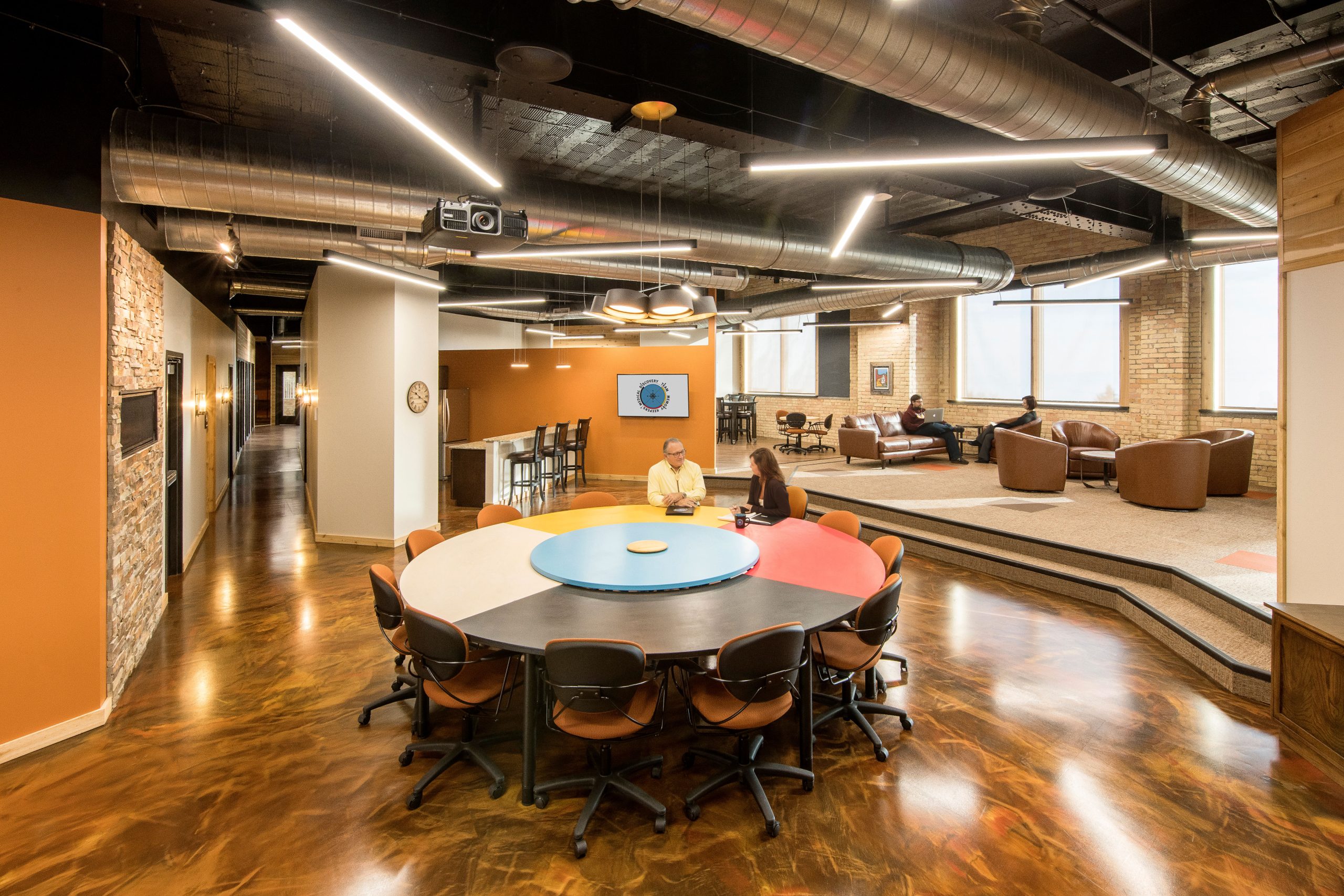
A commercial garage converted into the U of M Memory Keepers – Medical Discovery Team
Adaptive reuse is the repurposing of an existing building for an intention other than which it was originally built or designed for. With the post-pandemic ever-changing economic climate, this has become a popular option among business owners, community leaders, and government entities. It is a sustainable and environmentally friendly approach to architecture that can help to preserve historic buildings, reduce waste, and revitalize communities.
There are many factors to consider with adaptive reuse, such as the need to comply with building codes and the cost of renovations. However, the benefits of adaptive reuse can outweigh the challenges such as:
- Preserving architectural and cultural heritage: Adaptive reuse can help to preserve historic buildings that would otherwise be demolished, which can help to maintain the character of a community.
- Revitalizing communities: Adaptive reuse can help to revitalize communities by bringing new life to vacant or underutilized buildings, creating jobs, attracting businesses, and improving the quality of life in our communities.
- Igniting social change: Adaptive reuse can be used to create spaces for social and community gatherings, helping to build stronger communities and promote social change.
- Reducing Waste: Adaptive reuse can help to reduce waste by reusing existing materials and structures, protecting our natural resources, and reducing the environmental impact of construction.
As the world’s population grows and resources become more limited, adaptive reuse is likely to become an increasingly important practice in architecture. Adaptive reuse is a complex and challenging process, but it can be a rewarding one. By carefully considering the factors involved, architects and designers can work with a client or community leader to transform a facility into a space that is both sustainable and aesthetically pleasing.
Adaptive reuse is being creatively utilized in architecture across all industries:
- Converting retail spaces into healthcare facilities: The COVID-19 pandemic has led to an increased demand for healthcare facilities. The decline of brick-and-mortar retail has led to an increase in the availability of empty retail space which can be converted into much needed healthcare facilities. This ecological path to reuse these existing buildings ensures that there is adequate healthcare capacity in the community.
- Converting office buildings into mixed-use space: The rise of remote work has led to a decline in the demand for office space. As a result, many office buildings are being converted into mixed-use space. This is a sustainable way to reuse existing buildings, while providing for multiple tenants.
- Converting historic buildings into residential spaces: With an unpredictable housing market, the demand for multifamily residential spaces has greatly increased. Converting historic buildings into residential spaces is a great way to preserve these structures for future generations.
The COVID-19 pandemic paired with an increase of environmental awareness has had a significant impact on the way we work, live, and interact with our surroundings. As a result, there is a growing interest in adaptive reuse as a way to create more sustainable and resilient buildings.
Overall, adaptive reuse is a promising option to preserving our architectural heritage in a post-pandemic world. It provides a sustainable and unique approach to breathe new life into old buildings while reducing the environmental impact of new construction.

